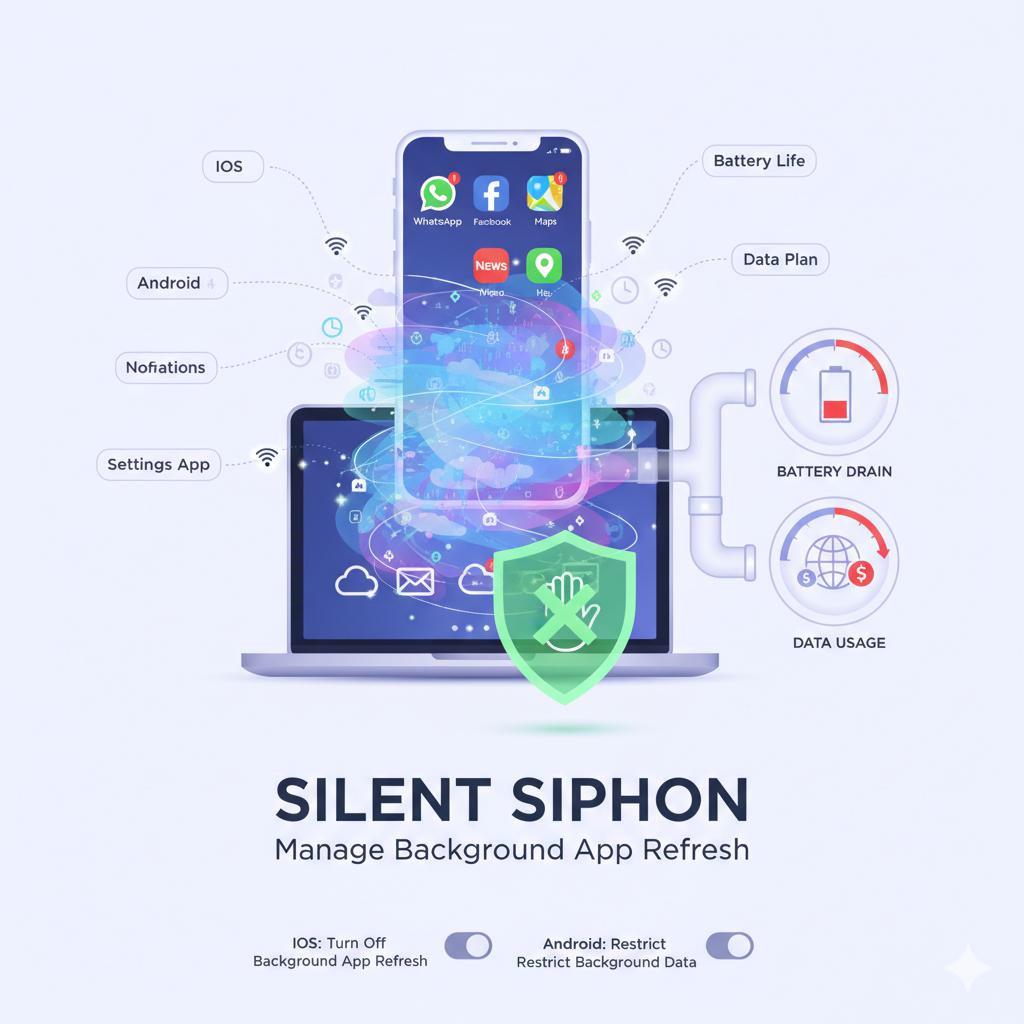How Background Apps Affect Your Device Performance
Sep 10, 2025 | Home Technology, Helpful Tips, Wi-Fi

Tackling the Silent Siphon
Have you ever wondered why your phone battery drains faster than expected or why your Wi-Fi seems sluggish even when you’re not actively using your phone, tablet, or computer? The reason may come down to background activity. What apps are secretly running in the background?
On both Apple and Android devices, some apps constantly connect to the internet in the background to fetch new information, send push notifications, and even preload content. While this keeps news, social media, and messaging apps like WhatsApp, Facebook Messenger, and Instagram responsive with new messages and real-time updates, it can also drain battery life, mobile data usage, and overall performance, earning it the moniker of the “silent siphon.”
What Is Background App Refresh and Background Data?
For Apple iOS devices like iPhones and iPads, this process is called “background app refresh.” It allows apps to update themselves when they’re not open, so that a news app can load new content, or Google Maps can track location in real time, even if you’re not looking at it in your app switcher.
On Android phones (including Samsung and Pixel models), this is known as “background data” or “background activity.” Here, too, individual apps quietly exchange data in the background so you can receive notifications and updates without lifting a finger.
Other examples of background apps and data can include messaging, sports scores, or social media apps that automatically alert you even when you’re not actively engaging with them. These apps have to run in the behind the scenes all the time to keep you updated.
The Trade-Offs: Speed vs. Drain
While background connections improve convenience, they also create trade-offs:
- Battery Drain: Continuous syncing consumes battery power, which is why your iPhone battery may dip quickly when many apps are refreshing. Plugging into a charger keeps it going, but it’s not ideal.
- Data Usage: Background syncing can quickly eat through your cellular data allowance on a limited data plan. Even when on Wi-Fi, constant updates can consume bandwidth for other devices.
- Performance Impact: Too many apps refreshing at the same time can slow down your Android devices or Apple products, causing other tasks like streaming or messaging to lag.
How to Manage Background App Activity
What can you do about this? Can you avoid this debilitating phenomenon? Yes.
Thankfully, both Apple and Android allow you to control background syncing and balance convenience against efficiency.
On iPhone and iPad (iOS)
- Open Settings.
- Tap Background App Refresh.
- Choose to turn off Background App Refresh entirely, set it to only update on Wi-Fi, or manage specific apps individually.
- Switching to Low Power Mode to conserve the battery charge automatically disables Background App Refresh.
You can also turn Background App Refresh back on if you rely on messaging apps or need real-time updates from Google Maps or a news app. Just be prepared for battery drain and system slowdown.
On Android Devices (Samsung, Pixel, etc.)
- Open the Settings app.
- Go to Apps or Data Usage, depending on your version of Android.
- Find individual apps where you want to restrict background data.
- Toggle off Allow background data usage to prevent unnecessary syncing.
Striking the Right Balance
Both Apple’s App Store and Android’s Play Store design apps with convenience in mind, but that convenience comes at the expense of battery drain, high mobile data usage, and sometimes weaker performance. By managing how apps behave in the background, you can extend your iPhone battery, stretch your data plan, and improve the day-to-day speed of your device, whether it’s an iPhone, iPad, Samsung, or Pixel.
If you rely heavily on push notifications—for example, receiving new messages from WhatsApp or updates from social media apps—you may want to selectively allow background activity for those apps while restricting others, like shopping or weather apps that don’t need constant updates.
Do you really need all those updates and notifications? Are they all that important? If not, consider turning them off to preserve your battery (and perhaps your sanity).
Bottom Line
Check your device’s settings, learn when and how to disable Background App Refresh or restrict background data, and prioritize apps that truly need real-time updates. Your phone battery, data usage, and internet connection will thank you.
Looking for faster internet? Try here:
- background apps
- slow wifi
- battery drain







